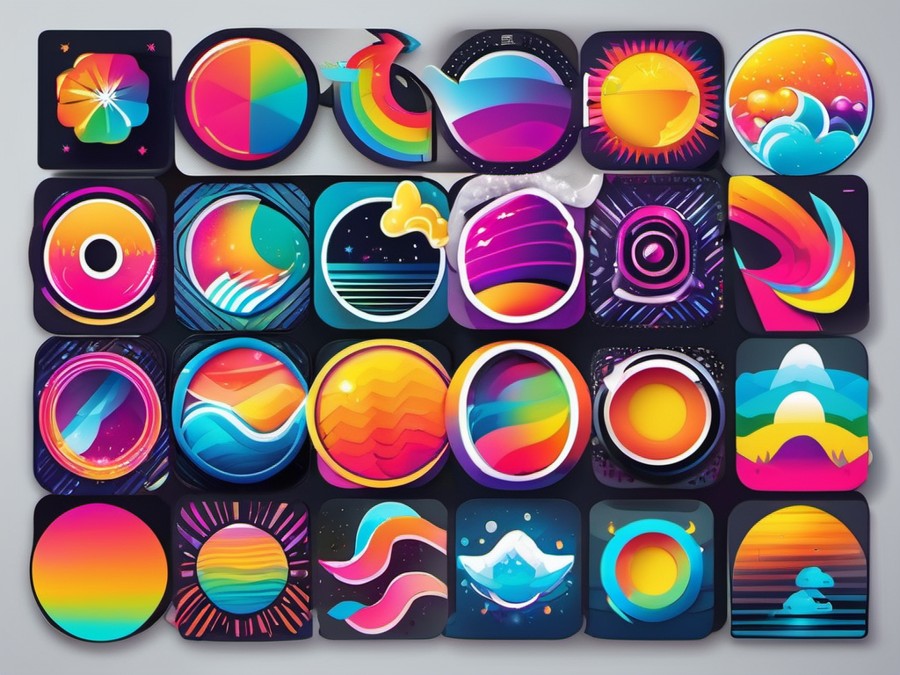· Charlotte Will · Macro & Ringlight Flashes · 10 min read
What are the Benefits of Using a Macro Flash in Close-Up Photography?
Discover the benefits of using a macro flash in close-up photography. Improve focus, eliminate shadows, overcome low light challenges, and create dramatic effects with ease. Elevate your close-up shots to the next level with a macro flash.

Close-up photography is an art form that requires precision and attention to detail. While many photographers rely on natural light to capture the intricate details of their subjects, incorporating a macro flash can significantly enhance your close-up shots. If you’re new to macro photography or looking to elevate your game, understanding the benefits of using a macro flash is essential. Let’s dive into the magic of macro flashes and how they can transform your close-up photography.
Understanding the Magic of Macro Flash
Before we delve into the benefits, let’s clarify what a macro flash is and how it differs from regular camera flashes. A macro flash is specifically designed for close-up photography, typically featuring a ring or twin flash setup that wraps around the lens. Unlike traditional flashes, macro flashes provide even and soft lighting, which is crucial for capturing the finest details of your subjects.
How Does It Work?
The primary function of a macro flash is to illuminate your subject with consistent and balanced light. This is particularly important in close-up photography, where even the slightest variation in light can drastically change the appearance of your subject. For a deeper dive into how macro flashes work, check out What is a Macro Flash and How Does it Enhance Photography?.
Lighting Up the Details
One of the most significant benefits of using a macro flash is its ability to light up the details that natural light might miss. Whether you’re photographing intricate textures, tiny insects, or delicate flowers, a macro flash can reveal details that would otherwise be lost in the shadows.
The Power of a Macro Flash in Revealing Texture and Form
A well-lit subject with clearly defined textures and forms is the hallmark of great close-up photography. A macro flash ensures that every nuance of your subject is captured, from the delicate veins on a leaf to the intricate patterns on an insect’s wing.
Mastering Focus
Focus can be a challenge in close-up photography, especially when dealing with subjects that are highly detailed and prone to movement. A macro flash can help you master focus by providing consistent and uniform light that makes it easier to capture sharp, well-focused images.
Improving Focus with a Macro Flash
Consistent lighting helps your camera’s autofocus system lock onto the subject more accurately. By eliminating dark spots and shadows, a macro flash ensures that your camera can focus on the essential details of your subject.
Balancing Depth of Field and Sharpness
One of the key advantages of using a macro flash is its ability to balance depth of field and sharpness. By providing even lighting, a macro flash allows you to achieve a deeper depth of field without compromising the sharpness of your subject.
Overcoming Low Light Challenges
While natural light is beautiful, it’s not always sufficient for close-up photography. Low light conditions can lead to blurry images and underexposed subjects. A macro flash is a game-changer in these situations, allowing you to overcome low light challenges and capture stunning shots even in dimly lit environments.
Why Natural Light Isn’t Always Enough for Close-Ups
Natural light can be unpredictable and doesn’t always provide the consistent illumination needed for close-up photography. A macro flash ensures that you have the control and brightness required to capture every detail of your subject.
Freezing Motion in Close-Up Photography
Capturing fast-moving subjects can be tricky in close-up photography, but a macro flash can help you freeze motion with ease. By synchronizing the speed of your flash and camera, you can capture sharp images of moving subjects that would otherwise be blurry.
The Importance of Synchronizing Speed and Flash Power
To successfully freeze motion, ensure that your camera’s shutter speed is synchronized with the flash duration. This will allow you to capture crisp, blur-free images of fast-moving subjects.
Eliminating Camera Shake
There’s nothing more frustrating than a blurry shot due to camera shake, especially in close-up photography. A macro flash helps eliminate camera shake by providing a bright and consistent light source that allows you to use faster shutter speeds.
The Role of Flash Duration in Reducing Blur
The duration of your flash plays a crucial role in reducing blur. A macro flash with a fast flash duration can freeze the action and eliminate camera shake, resulting in sharper images.
Banishing Shadows
Shadows can detract from the beauty of your subject and make it difficult to capture all the details. A macro flash can help you banish shadows, ensuring that your subject is evenly lit and free from distracting dark spots.
Filling Shadows for Enhanced Clarity and Contrast
By filling in shadows, a macro flash enhances the clarity and contrast of your subject. This is particularly important in close-up photography, where every detail matters.
Techniques for Softening Harsh Light with a Macro Flash
While a macro flash provides consistent lighting, it can sometimes be too harsh. To soften the light, consider using diffusers or bounce cards to create a more flattering and softer effect.
Controlling Light with Ease
One of the greatest advantages of using a macro flash is the degree of control it offers over light. Whether you’re aiming for a dramatic effect or a soft, subtle look, a macro flash allows you to manipulate the light to suit your vision.
The Advantage of Off-Camera Macro Flash Setups
For even greater control, consider using an off-camera macro flash setup. This allows you to position the light exactly where you want it, creating unique and creative lighting effects.
Using Light Modifiers for Creative Control
Light modifiers such as softboxes, diffusers, and reflectors can help you achieve the exact look you’re after. Experiment with different modifiers to create unique and interesting lighting effects in your close-up shots.
Versatility in Macro Photography
Macro photography is not limited to a single type of subject. Whether you’re photographing insects, flowers, or textured surfaces, a macro flash offers the versatility needed to capture a wide range of subjects.
Capturing a Variety of Subjects with a Macro Flash
From delicate flowers to intricate insects, a macro flash can help you capture the beauty and detail of virtually any subject. The key is to adapt the light to suit the specific needs of your subject matter.
From Insects to Flowers: Adapting Light for Different Scenes
Different subjects require different lighting techniques. For instance, photographing insects might call for a more dramatic and directional light, while flowers may benefit from softer, more diffused lighting.
Achieving Consistency in Your Photos
One of the challenges of natural light photography is its inconsistency. Changes in weather and time of day can drastically alter the lighting conditions, making it difficult to maintain a consistent look in your photos. A macro flash helps you achieve consistency by providing a reliable and controlled light source.
Maintaining Uniformity with a Macro Flash
By using a macro flash, you can ensure that your photos have a consistent look and feel, regardless of the lighting conditions. This is particularly useful when shooting a series or a collection of related subjects.
Avoiding the Pitfalls of Varying Natural Light Conditions
With a macro flash, you don’t have to worry about the unpredictability of natural light. Whether you’re shooting indoors or outdoors, a macro flash provides the consistent illumination needed for high-quality close-up shots.
Creating Dramatic Effects
While consistency is important, a macro flash also offers the opportunity to create dramatic effects in your close-up photography. By directing and controlling the light, you can craft mood and atmosphere that enhances your subject matter.
Adding Drama with Directed Flash Lighting
To create drama, try directing your macro flash to highlight specific features of your subject. This can draw the viewer’s eye to the most important details and create a more dynamic composition.
Crafting Mood and Ambiance in Close-Up Shots
The right lighting can dramatically change the mood of your photo. Experiment with different light angles and intensities to achieve the desired ambiance for your close-up shots.
Getting Started with Macro Flash Photography
Ready to dive into the world of macro flash photography? Here are some essential tips and equipment to help you get started.
Essential Equipment for Macro Flash Photography
- Macro Lens: A dedicated macro lens is a must for close-up photography. These lenses are specifically designed to capture details at very short distances.
- Macro Flash: Invest in a high-quality macro flash that offers consistent and even lighting.
- Tripod: A tripod is essential for stabilizing your camera and achieving sharp, blur-free images.
- Light Modifiers: Incorporate diffusers and reflectors to soften the light and create unique effects.
- Remote Triggers: Using remote triggers can help you synchronize your camera and flash, ensuring optimal results.
For more information on getting started with macro photography, check out What is the Ideal Length for Tripod Legs in Different Photography Settings?.
Best Practices for Using a Macro Flash
To get the most out of your macro flash, follow these best practices and techniques.
Optimizing Camera Settings for Macro Flash Shots
- Aperture: Use a narrow aperture (high f-number) to achieve greater depth of field.
- Shutter Speed: Aim for a shutter speed that is synchronized with your flash duration to eliminate camera shake.
- ISO: Start with a low ISO to minimize noise, and adjust as needed based on your lighting conditions.
- White Balance: Set your white balance to match the color temperature of your flash for accurate colors.
Experimenting with Different Light Angles and Intensities
Don’t be afraid to experiment with different light angles and intensities. By moving your macro flash around, you can create unique lighting effects that enhance the beauty of your subject.
Common Pitfalls to Avoid
While using a macro flash has numerous benefits, there are some common pitfalls to be aware of.
Preventing Overexposure with a Macro Flash
One of the main challenges of using a macro flash is preventing overexposure. To avoid this, start by setting your flash power to the lowest setting and gradually increase it until you achieve the desired effect.
Managing Reflections and Glare in Close-Up Photography
Reflections and glare can be distracting in close-up photography. To minimize these issues, use polarizing filters or adjust the angle of your light to reduce unwanted reflections.
Expanding Your Skills
Once you’ve mastered the basics of macro flash photography, it’s time to expand your skills and experiment with more advanced techniques.
Advanced Techniques for Mastering Macro Flash Photography
- Multiple Flashes: Incorporate multiple flashes to create complex lighting setups and achieve dramatic results.
- Wireless Triggers: Use wireless triggers to control off-camera flashes and achieve greater flexibility in your lighting.
- High-Speed Sync: Experiment with high-speed sync to capture fast-moving subjects and achieve unique lighting effects.
For more insights into advanced photography techniques, check out What is the Best Way to Backup Data Using an External Hard Drive?.
Conclusion
Incorporating a macro flash into your close-up photography can significantly enhance the quality and creativity of your shots. From lighting up details to mastering focus, overcoming low light challenges, and creating dramatic effects, a macro flash offers numerous benefits that are hard to ignore. So why wait? Embrace the power of a macro flash and elevate your close-up photography to new heights.
FAQs
What is the best macro flash for beginners? For beginners, a ring flash is often the best choice. Ring flashes provide even and soft lighting, making them ideal for close-up photography.
How do I achieve soft lighting with a macro flash? To achieve soft lighting, use diffusers or bounce cards to soften the light emitted by your macro flash.
Can a ring flash be used for macro photography? Yes, ring flashes are specifically designed for macro photography. Their circular shape wraps around the lens, providing even and soft lighting that is perfect for close-up shots.
What are some creative uses of a macro flash beyond close-ups? Macro flashes can also be used in product photography, food photography, and even portraiture for unique lighting effects.
How do I balance ambient light with my macro flash? To balance ambient light with your macro flash, use a remote trigger to sync the flash with your camera’s shutter. This will allow you to capture both ambient and flash-lit elements in your photo.




